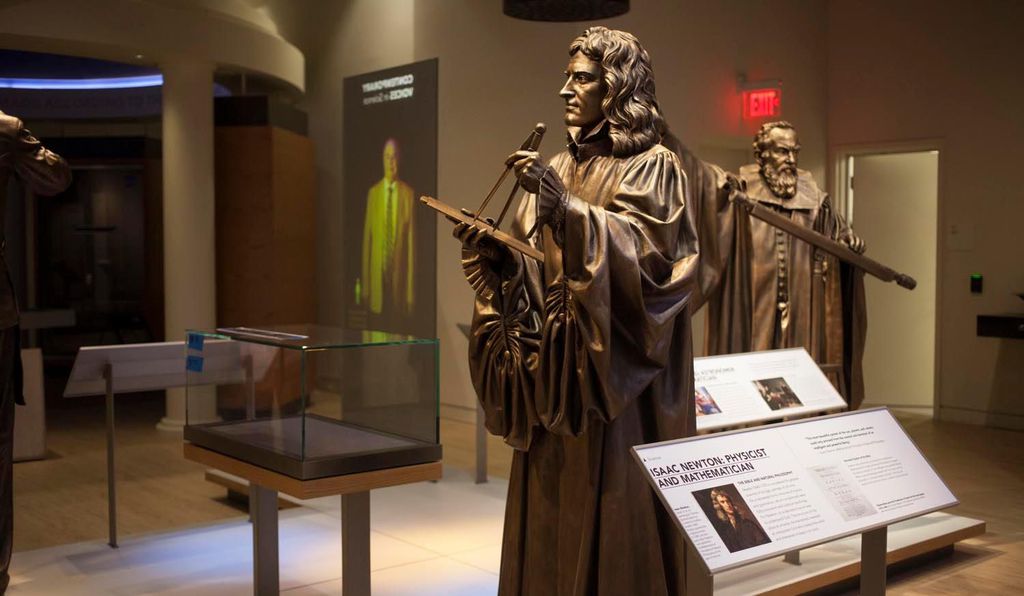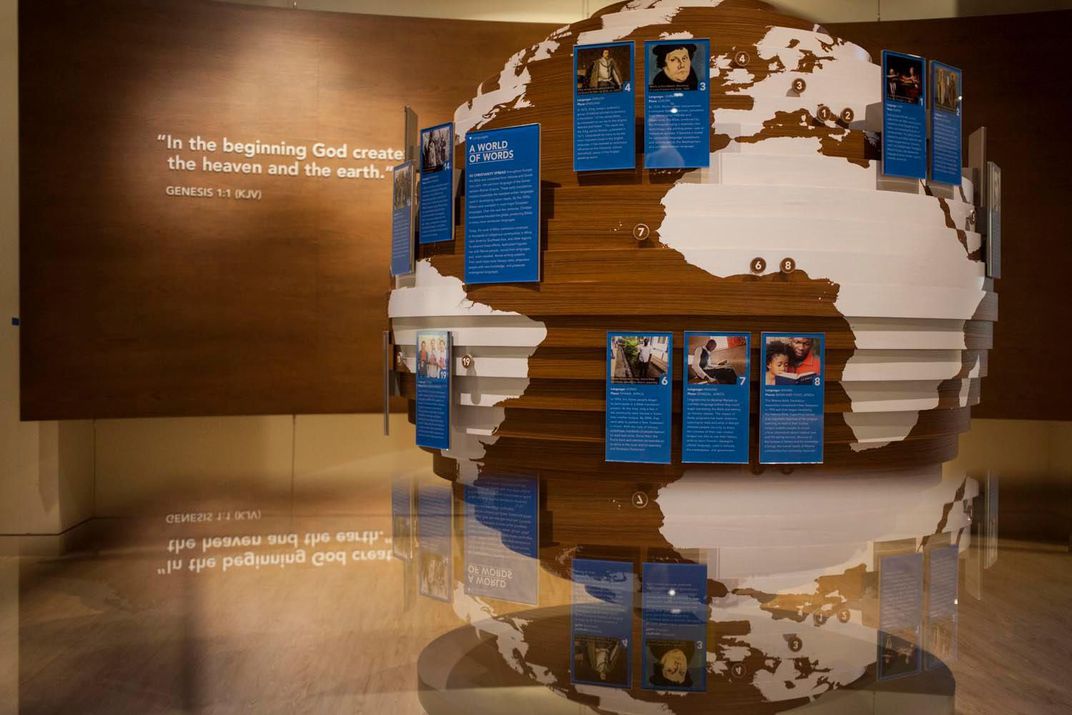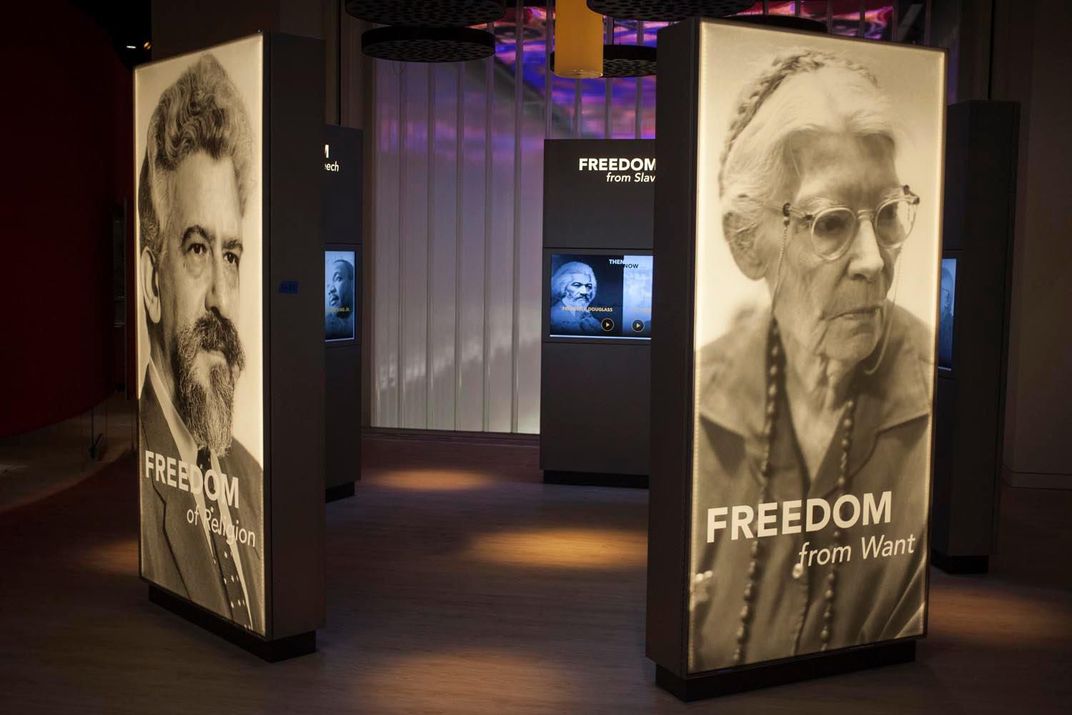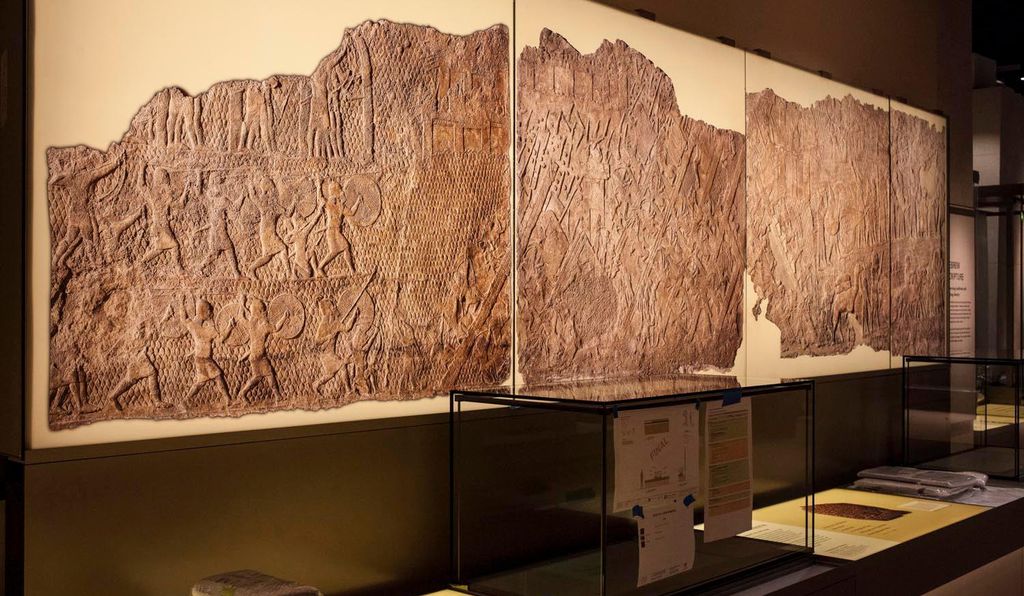The Museum of the Bible wants to tell you the greatest story ever told.
Just how the $500 million, 430,000-square-foot endeavor, located just two blocks south of the National Mall in Washington, D.C., tells that story, however, remains a point of curiosity.
Creating a museum around a topic as contentious as religion would be challenging for any organization, but a confluence of factors surrounding the museum’s funders, origins, and its collections have heaped heightened interest and scrutiny upon this new cultural institution, which opens to the public on Friday, November 17.
The museum, free to attend but a donation is suggested, is owned and operated by the Museum of the Bible, Inc., a non-profit entity chaired by Steve Green, better known as the president of the craft store giant Hobby Lobby. The Green family, led by Steve’s father, David, is the largest individual donor to evangelist Protestant causes in the United States. They garnered national attention in 2014 for successfully arguing before the Supreme Court that private companies should not be required to provide health insurance coverage that runs counter to their religious beliefs.
Reporting by the Washington Post shows an estimated two-thirds of the museum’s $557 million in contributions come from Hobby Lobby and the National Christian Foundation. Considering that the museum’s collections are also drawn from the Green Collection, which is owned by Hobby Lobby, the larger question remains: Will the museum reflect an evangelical viewpoint or will it teach a broader story, accessible to visitors of all faiths?

Eight floors in total, the museum is focused around three main floors: the history floor, which tells the story of the Bible through historical artifacts; the impact floor, which follows the cultural impact of the Bible in the United States and the world more broadly; and the narrative floor, which includes a diorama representation of the 1st-century A.D. world of Jesus of Nazareth. Beyond the exhibition floors, the building features a rooftop garden with plants referenced in biblical texts, a performance hall, which opens with a run of the Broadway musical Amazing Grace, and exhibition spaces that will house long-term loans from the Vatican and the Israel Antiquities Authority.
According to museum president Cary Summers, during a panel discussion held in October, the museum wants to create a space to allow “all people to engage in the history, narrative and impact of the Bible.”
But whether they can deliver on those promises has yet to be determined.
Over the course of the past several years, religious scholars Candida R. Moss and Joel S. Baden, co-authors of Bible Nation: The United States of Hobby Lobby, have interviewed many of the experts involved with the creation of the museum and are familiar with the content being displayed. They say the museum has consciously or unconsciously set out to tell a specifically American Protestant narrative.
“That’s just fine, this is a private museum, they are endowing this out of their resources, of course, if they want to build an American Protestant museum, they should,” says Moss. “But they say they’re building a ‘non-sectarian’ museum of the Bible. But that obscures the fact that there is no [one] story of the Bible. It obscures the history of people in other parts of the world. It even obscures the history of groups that are represented there, like Roman Catholics and Jews.”
At the center of this issue is the word “non-sectarian,” which the Museum of the Bible uses often in its messaging. The term has a long history in the evangelist community dating back to the early 19th century. As Steven K. Green (no relation), the director of the Center for Religion, Law & Democracy at Willamette University College, explains, for the faith tradition, the concept is rooted in the belief that there are fundamentals of the Bible that are non-disputable and non-debatable. “It’s hard for you to realize it is representing a particular perspective,” says Green of the often well-meaning evangelical Protestants who clashed with Catholics firm in their own religious tradition in the 1800s.
The museum, however, stands by its concept. Steve Bickley, the vice president of the museum, addressed the museum’s self-proclaimed non-sectarian viewpoint, at the panel discussion: “We use the word to note that the museum would express many faith traditions who embrace the Bible as their own; traditions that have different canons and different interpretations of the Bible.”
***
The Green family began acquiring biblical artifacts in 2009, when Johnny Shipman, a Dallas businessman, and Scott Carroll, a former professor at Cornerstone University who specialized in biblical manuscripts, approached the Green family with the proposition to open a Bible museum.
The fledgling museum’s first filing as a non-profit with the IRS in 2010 reflects what began as an evangelical story: “to bring to life the living word of God, to tell its compelling story of preservation, and to inspire confidence in the absolute authority and reliability of the Bible.”
The Green collection itself mirrored this mission statement, as Steve Green himself said, “We’re buyers of items to tell the story. We pass on more than we buy because it doesn’t fit what we are trying to tell.”
The museum was planned for Dallas, “because of the large number of people of faith in the area” as Scott Carroll told the New York Times that year. But by 2012, the Green family had already parted ways with Shipman and was about to with Carroll, then director of the Green collection, who had come under fire for dissolving ancient papyri acquired by the Green collection in hopes of uncovering New Testament manuscripts. The practice, which destroyed the artifacts in the process, provoked outrage among those who saw it as prioritizing one culture’s heritage for another, with Italian papyrologist Roberta Mazza dubbing Carroll “the Palmolive Indiana Jones.”
In July of 2012, a new vision for the museum began coming together. The Greens purchased the Washington Design Center building for a reported $50 million, and with that plans were under way for the Museum of the Bible to open in D.C.
The 2012 IRS filing reflected that change in its mission, stating: “We exist to invite people to engage with the Bible through our four primary activities: traveling exhibits, scholarship, building of a permanent museum, and developing elective high school curriculum.” The following year, the museum’s mission statement was whittled down to saying: “We exist to invite all people to engage with the Bible. We invite Biblical exploration through museum exhibits and scholarly pursuits.”
Meanwhile, the Greens continued to rapidly acquire biblical artifacts for the museum. Composed of some 40,000 artifacts today, the collection is now one of the world’s largest in private hands. Its fast-paced expansion, however, drew concern among scholars, who worried about how the Greens were acquiring their artifacts, fears that extended to the proper documentation of provenance of objects that would go on display in the museum.
A deal “fraught with red flags,” according to a statement by the U.S. Attorney’s Office, made news this summer, when the federal government filed a civil action against Hobby Lobby to forfeit thousands of ancient Iraqi artifacts purchased in December 2010.
In the aftermath, Hobby Lobby paid a $3 million fine and agreed to improve its practices. Steve Green issued a statement explaining that at the time it made the deal, Hobby Lobby had been “new to the world of acquiring these items, and did not fully appreciate the complexities of the acquisitions process.” But Patty Gerstenblith, an expert in cultural property law, who was brought on as an outside advisor for the Green around the time the deal was being reached, says in an interview with antiquities blog Chasing Aphrodite that she made certain the Greens were aware of the significant risk that came with purchasing artifacts from countries like Iraq. She estimates some 200,000 to 500,000 objects have been looted from Iraqi archaeological sites alone since the 1990s.
The Museum of the Bible has attempted to separate itself from the story. While Moss and Baden, who first reported on the seized Iraqi heritage shipments labeled “hand-crafted clay tiles” reportedly “destined for the Museum of the Bible” for the Daily Beast back in October 2015, the museum has since denied that the seized artifacts were ever intended to go display in the museum. It has also made it clear that its acquisition policy today has been tightened to “the highest standards of ethical and professional practice.” (Those who attended the October panel were given literature detailing the museum’s acquisition policy going forward.) But the fact remains that through business details and donations, Hobby Lobby and the Museum of the Bible are deeply tied together.
In a recent interview with the Washington Post, John E. Simmons, a museum consultant and president of the Collections Stewardship Professional Network of the American Alliance of Museums (AAM) suggests there’s “a lot of room” for conflicts of interest” when it comes to the museum and the corporation, something that could hurt the museum’s chances of future accreditation with AAM. (A museum has to be open for two years before it can apply.)
Cuneiform tablets aside, questions about clear provenance of other artifacts in the Green collection meant to go on view in the museum have also been cause for concern among critics. Take a Galatians 2 Coptic fragment, which Mazza identified as the same fragment that surfaced on eBay before it appeared in a traveling exhibition organized by the Museum of the Bible in Vatican City. While museum representatives insist the fragment came from a reputable dealer and has clear provenance, they have not been able to explain why the artifact appeared on the auction website.
There’s also the matter of the Dead Sea Scroll fragments from the Green collection that will go on view in the museum. In a piece published in the journal Dead Sea Discoveries, biblical scholar Kipp Davis of Trinity Western University states that it’s very likely six, if not more, of the 13 fragments in the collection are modern-day forgeries, due to misaligned lines or letters, palaeographic anomalies and inconsistencies.
When asked about these concerns, Steve Pollinger, the director of museum content says the museum will provide a contextual explanation about the scrolls. “One of the most important things to us at this point is to just disclose they may or may not be authentic,” he says. “It’s something the whole community can discover together, and so from that standpoint having them on display as something everyone’s looking at, I don’t see that as a bad thing. I think it would be a bad thing if we were trying to claim something about them that isn’t true. I’m sure once testing is more conclusive we may have to adjust what we’re saying about them to some degree.”
For Moss and Baden, their concern is that the people who they see as committing the initial errors, as they put it, are largely still in their positions, such as Summers, the museum president, and David Trobisch, who’s served as the director of collections since 2014. To reckon with earlier practices, they want the museum to release a full catalogue of the museum’s collection with provenance history to the public, something it has yet to do.
“In this forward-looking sense, they’re doing all the right things. They are putting in place a policy that looks quite good; they have hired external people to help them evaluate; they have said that they’re going to do a better job,” says Baden. “What is missing from all of that, is a sense of responsibility to correct the errors of the past.”
Pollinger does not dismiss these concerns. “A lot of the critique that has been given has been true about us and our system at some point in time, but we’ve worked hard in this museum to really accomplish the engaging, scholarly, nonsectarian, in a way that is pretty defensible,” he says. “We’ve worked hard to overcome a lot of the criticisms that have been given to us by people that don’t realize the upgrades we’ve made.”
The leadership of the museum has also repeatedly said that the Green family does not have final say when it comes to artifacts displayed in the museum.
“Steve Green, because he sits on the board, has been in a position probably to see final drafts of things, but as we developed all of our content through here we really did that internally and with experts,” says Pollinger.
***




In a city full of public museums, Pollinger says the Museum of the Bible sees itself as adding to the conversation by telling an immersive, interactive story.
“If it’s something good I want to be changed by it,” he says. “When I go to a museum I want to be affected by it. To me that’s learning. I want to appreciate what I see so I can tell it makes a difference. I would say in every section of the museum I think there’s opportunities like that.”
One example he cites is “The Battle Hymn of the Republic,” the rousing Civil War song, whose lyrics abolitionist Julia Ward Howe penned at the Willard Hotel in Washington, D.C., on the night of November 18, 1861. Like many of the historical figures included in the Bible in America section (some to more convincing results than others), the museum uses Howe to draw a connection between the Bible and American culture; Howe’s lyrics link the Union’s fight with Jesus’ mission: “He died to make men holy, let us die to make men free.”
“The original is sitting right there,” says Pollinger. “At the same time you have a jazz cello playing ‘The Battle Hymn’ in a speaker right above you in a very surprising tone, and then you’ve got a projection system putting the words up on the tapestry. When the whole environment comes together for me it’s just moving and because of that I’m like, ‘Yes, I’m satisfied.’”
Such technological innovations are in exhibits with artifacts that, per Pollinger, have been vetted by more than two dozen outside experts. He lays out the museum’s approach to its artifacts as follows: “How can we go ahead and display what would be consensus central views that are accessible and stir interest and not white wash over that there are differing positions?”
Believing it’s possible to reach consensus is arguably itself a point of view, though. As Steven K. Green of Willamette, points out, everything has an editorial aspect to it. “What documents you believe are the essential historical documents will reveal your own predisposition and your own biases. In that sense, I think it’s impossible to get consensus on the core documents because someone will always say well, why is this one not here?”
For its part, the museum wants people who enter the Museum of the Bible to see what it’s about before making judgements.
As Georgetown University professor Timothy Shah, one of the museum’s advisors, said at the October panel, “There’s an assumption that this museum is kind of an unthinking celebration of the Bible as having a wonderful impact on everything and anyone who actually looks at the exhibits will see that’s not the case.”





